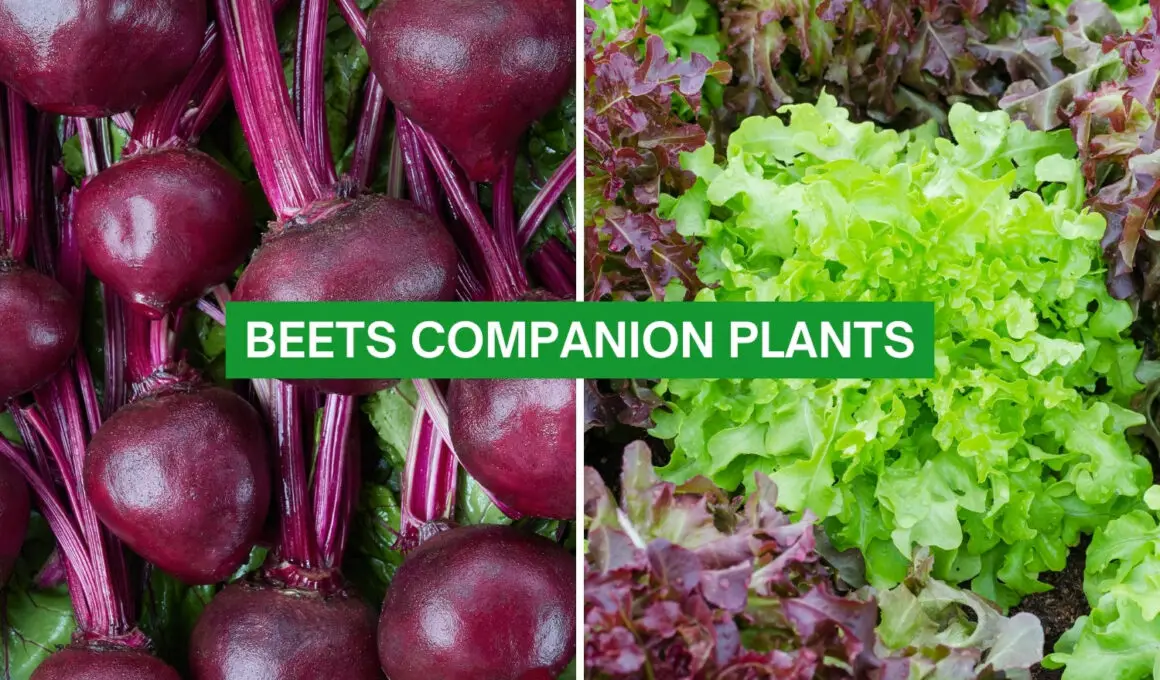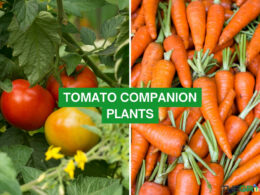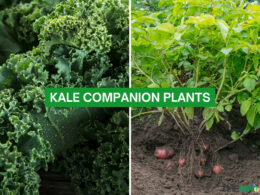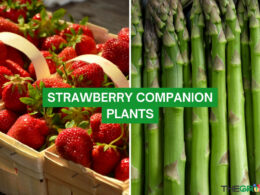In This Article Show
Companion planting, in its simplest terms, is the concept of planting certain types of plants near each other because they help each other grow or offer some form of mutual benefit.
Be it pest control, enhancing growth, or improving flavor, the right companions can greatly boost your garden. One such vegetable that benefits significantly from companion planting is our nutrient-rich, earthy buddy – the beet.
In this post, I will share a comprehensive list of beet companion plants that can work synergistically with your beets to thrive. Additionally, I will guide you through the ones to avoid.
This is based not only on the broad principles of companion planting but also on my personal experiences and observations over the years in my garden. Let’s get started.
Understanding Companion Planting for Beets
As a gardener with over 13 years of experience, I’ve found that understanding the specific needs and characteristics of each plant is the first step toward successful companion planting. Let’s apply this rule to beets.
Beets, also known as beetroot, are cool-season crops that grow best in moderate climates. They prefer full sun exposure and well-draining soil rich in organic matter. When it comes to companion planting, it’s important to consider these needs to make sure the companion plants chosen create a harmonious environment for all involved.
Get Gardening For Beginners
Our new EBOOK shows newcomers and green thumbs alike a step by step guide to growing the garden of their dreams.
Companion planting is akin to creating a tiny ecosystem where each plant plays a specific role. This might involve deterring pests, enriching the soil, or even boosting the flavor and yield of each other. For instance, some plants may repel pests that typically bother beets, while others may improve the soil’s health by fixing nutrients.
For beets, companion planting has some specific benefits. It can help improve yield, minimize the use of space, control pests, and, in some cases, even enhance the flavor of the beets. In the following sections, we will explore the best companion plants for beets and how they offer these benefits.
The key to successful companion planting, like any aspect of gardening, lies in observation, understanding, and adaptability. What works in one garden may not work in another due to differences in soil, climate, and local pests.
The Complete List of Beets Companion Plants
Over the years, I’ve discovered that several plants make excellent companions for beets. They either enhance each other’s growth, improve soil health, help in pest management, or even enhance flavor. Let’s delve into some of these helpful allies.
1. Onions
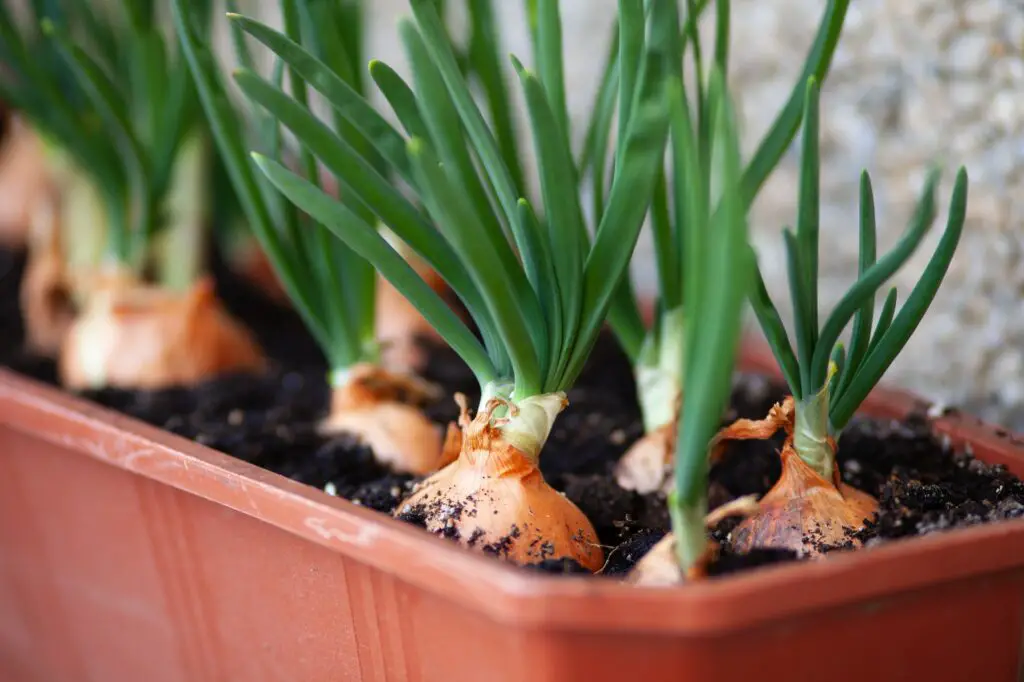
In my garden, I have found onions to be a reliable partner for beets. Onions deter pests that might otherwise find beets appealing, including aphids and certain types of beetles. Besides, planting them together makes efficient use of space, as the tall, thin structure of onion plants contrasts well with the low-growing beet leaves.
2. Cabbage
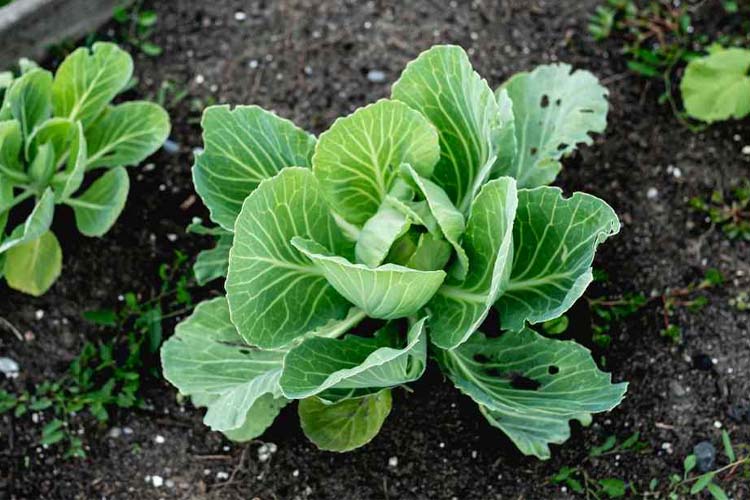
Cabbage is another great companion for beets. They have similar growth requirements, and planting them together helps make efficient use of space and nutrients. Moreover, cabbages can provide a bit of shade to beet plants in the peak of summer, reducing the risk of the beets bolting prematurely.
3. Kohlrabi

Kohlrabi is an often-overlooked beet companion, but in my experience, it has proven to be beneficial. Like cabbage, kohlrabi shares similar growing requirements with beets, making them compatible garden buddies. Furthermore, kohlrabi might deter some pests that could otherwise be a nuisance to your beet crop.
Get Gardening For Beginners
Our new EBOOK shows newcomers and green thumbs alike a step by step guide to growing the garden of their dreams.
4. Garlic
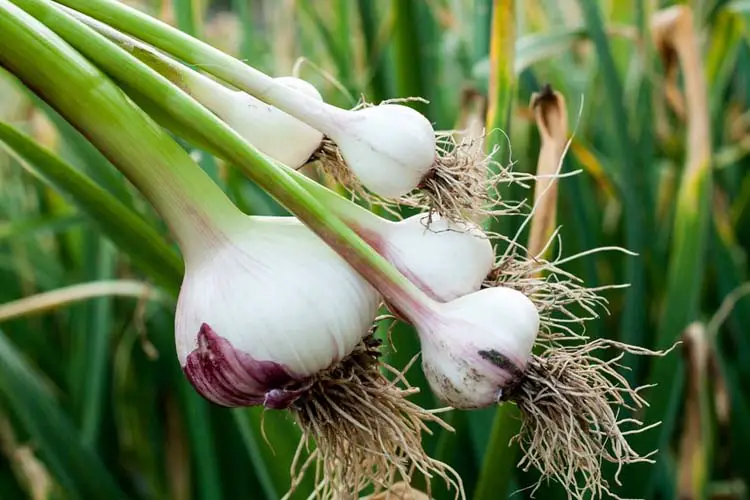
Garlic is another beneficial companion for beets. The strong scent of garlic deters many common garden pests, creating a protective boundary around your beets. I’ve found that garlic, when planted nearby, has helped in keeping my beet garden healthier.
5. Bush Beans
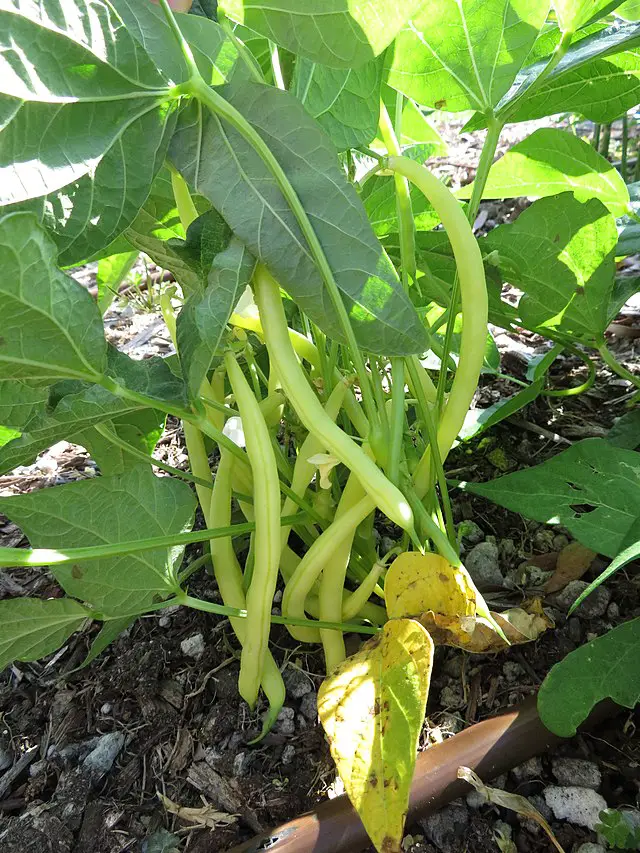
Bush beans, unlike their pole counterparts, are low-growing plants that make a wonderful companions for beets. The beans help to fix nitrogen in the soil, thus providing beets with the necessary nutrients for their growth.
6. Lettuce

Lettuce and beets are a match made in gardening heaven. They both have similar water and sunlight requirements. Moreover, lettuce has shallow roots, while beets have deeper roots, which means they won’t compete for nutrients and space, making them excellent neighbors.
7. Radishes
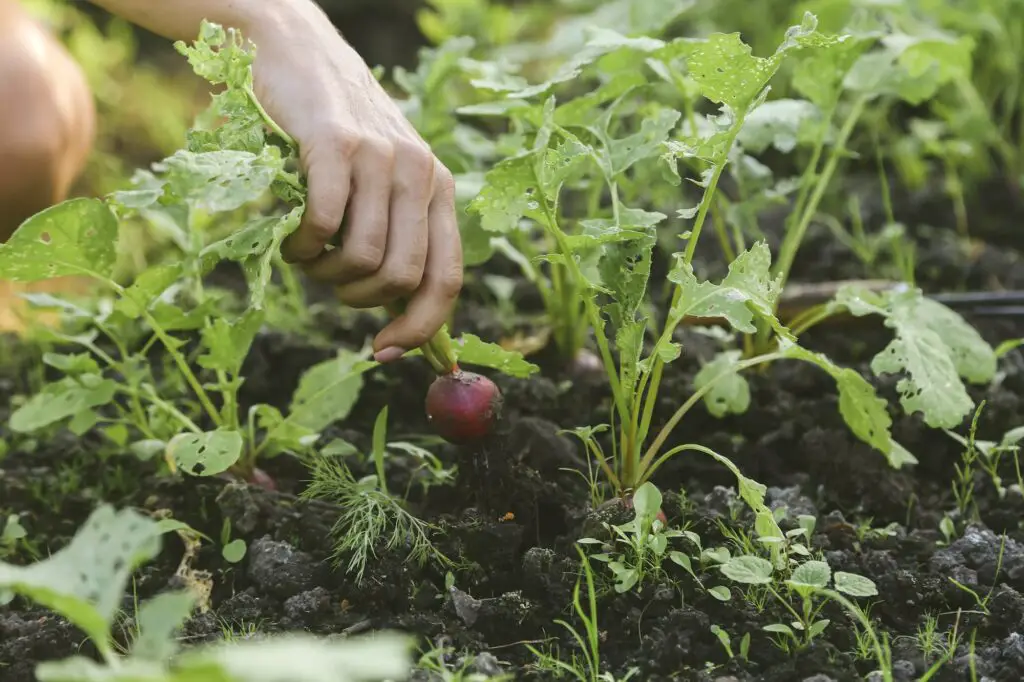
Radishes can be a great companions for beets as they mature quickly and can be harvested before the beets need more room to grow. Their quick growth can also help to break up the soil, making it easier for beetroots to expand.
8. Swiss Chard
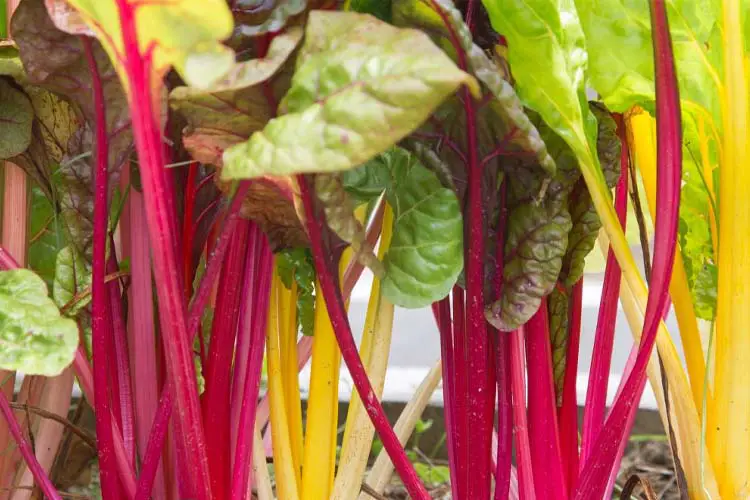
Swiss chard is a fantastic companion for beets because both belong to the same family (Beta vulgaris), meaning they have similar needs regarding light and water. Swiss chard also has large leaves that provide shade to beet plants, helping them survive in the heat of summer.
9. Marigolds
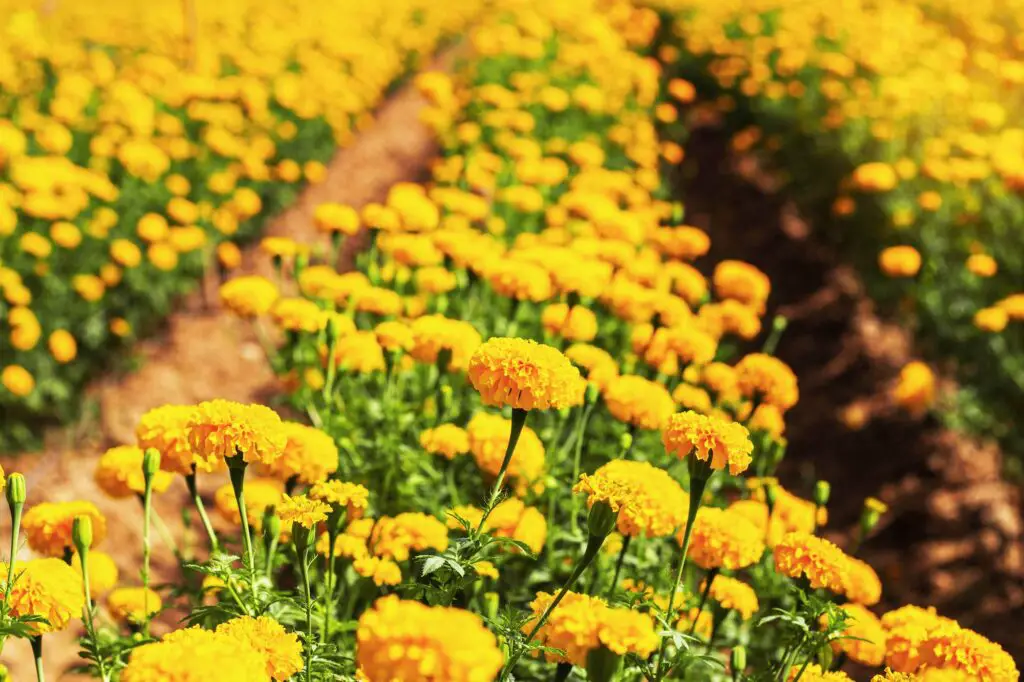
Never underestimate the power of flowers in your vegetable garden! Marigolds are especially helpful. Their distinct aroma is known to repel several common pests that could otherwise cause harm to your beet plants. Plus, they add a splash of color to your garden.
Plants to Avoid Planting with Beets
While many plants thrive alongside beets, some plants might not make the best neighbors. Here are some plants that I, as an experienced gardener, have found to be less than ideal companions for beets.
1. Pole Beans
Pole beans and beets aren’t the best match. They compete for the same nutrients, particularly for the availability of boron in the soil. This competition might result in undernourished beets or beans.
2. Mustard
In my 13 years of gardening, I’ve noticed that mustard plants can inhibit the growth of beets. It seems that they might secrete substances into the soil that stunt beet development, a phenomenon known as allelopathy.
3. Field Mustard
Field mustard, just like regular mustard, is another plant to avoid when planting beets. They appear to have a similar negative impact on beet growth and development.
4. Charlock
Charlock, a type of wild mustard, can also have detrimental effects on beets. If you find this growing as a weed in your garden, it’s best to remove it before planting your beets.
5. Alfalfa
While alfalfa is often a great companion for many plants due to its ability to fix nitrogen in the soil, it’s not the best friend for beets. They both have deep root systems and end up competing for the same resources underground.
Avoiding these plants while planning your beet garden can help your beets flourish without unnecessary competition or harm.
Practical Tips for Companion Planting with Beets
Companion planting is as much an art as it is a science. With over 13 years of experience in the garden, I’ve collected a handful of practical tips that will help make your companion planting experience with beets more successful.
1. Consider Planting Time
Timing is crucial when you are dealing with companion planting. Some plants grow faster than others, so it’s important to stagger your plantings accordingly. For instance, radishes grow quite quickly and can be harvested before the beets need more room to grow.
2. Mind the Space
Respect each plant’s space requirements. Overcrowding can lead to competition for resources and increase the chance of disease spread. For example, while onions and beets make good companions, be sure not to plant them too close to avoid competition for underground space.
3. Rotate Your Crops
Crop rotation is a good practice for any gardener. This prevents the buildup of specific pests and diseases and allows the soil to replenish its nutrients. After a season of growing beets, consider rotating in a legume like bush beans to fix nitrogen back into the soil.
4. Utilize the Vertical Space
Take advantage of vertical growth when companion planting. This can help you get more yield in a smaller space and can also assist in pest control. For instance, the tall growth of garlic can help deter pests from your beets.
5. Observe and Adapt
Every garden has its unique set of conditions. So, while it’s good to follow general guidelines, it’s equally important to observe your garden’s behavior. Pay attention to how the plants interact with each other and the environment, and don’t be afraid to tweak your strategies based on these observations.
Remember, the goal of companion planting is to create a symbiotic relationship between the plants in your garden. The right companions can enhance growth, control pests, and even improve flavor. But this synergy is achieved through careful planning, observation, and a dash of trial and error.
Wrapping it up
Gardening, especially the practice of companion planting, is a journey of discovery and learning. Beets, with their nutritious profile and hardy nature, offer a great opportunity to experiment with companion planting. From onions and cabbage to marigolds and bush beans, the right companions can significantly enhance your beet crop’s health and yield.
However, it’s essential to remember that every garden is unique, with its own microclimate and soil characteristics. What works for one garden might not work for another. So, don’t hesitate to experiment, observe, and adapt. After all, these trials and learnings are what make the gardening journey so rewarding!





